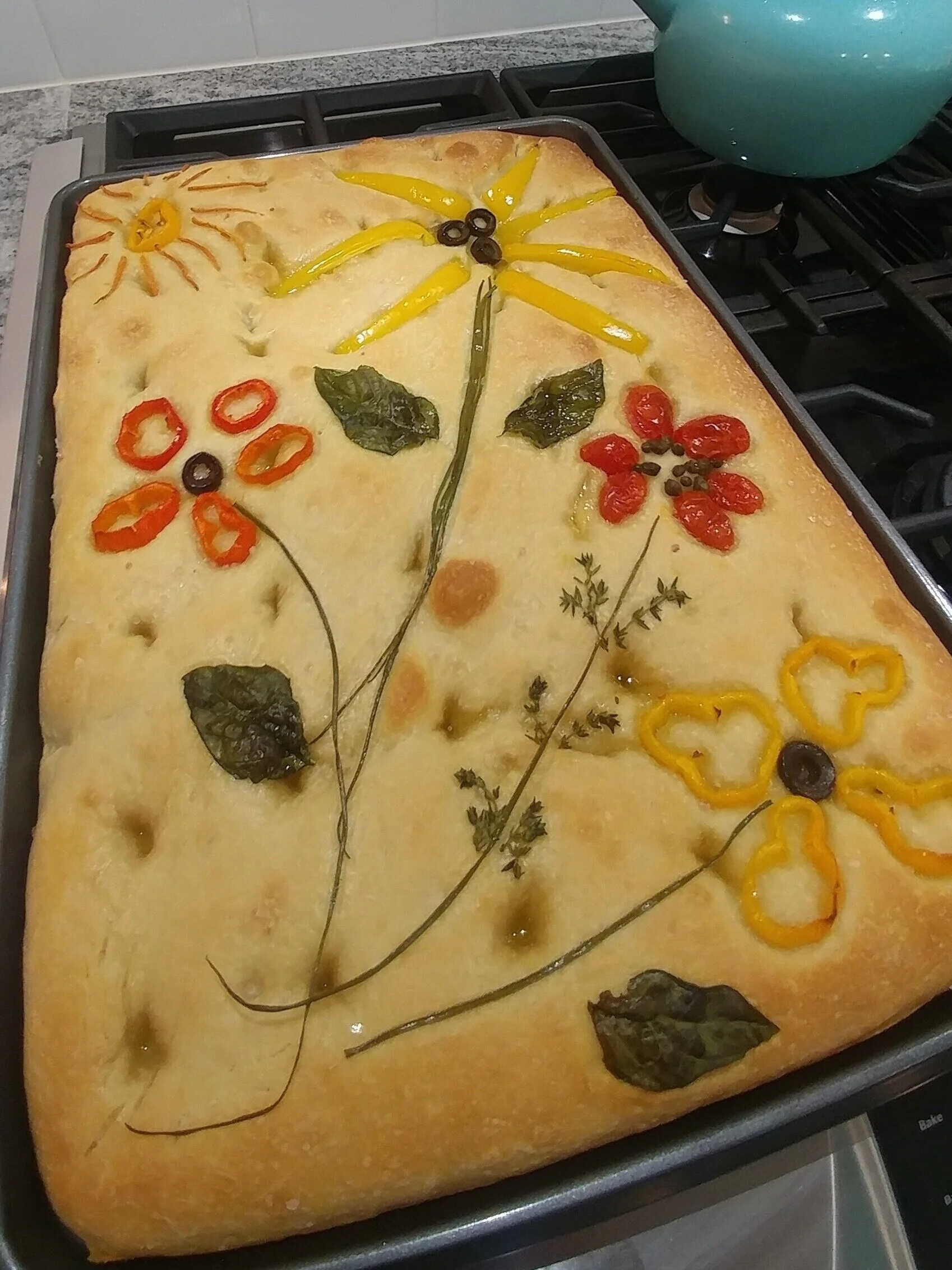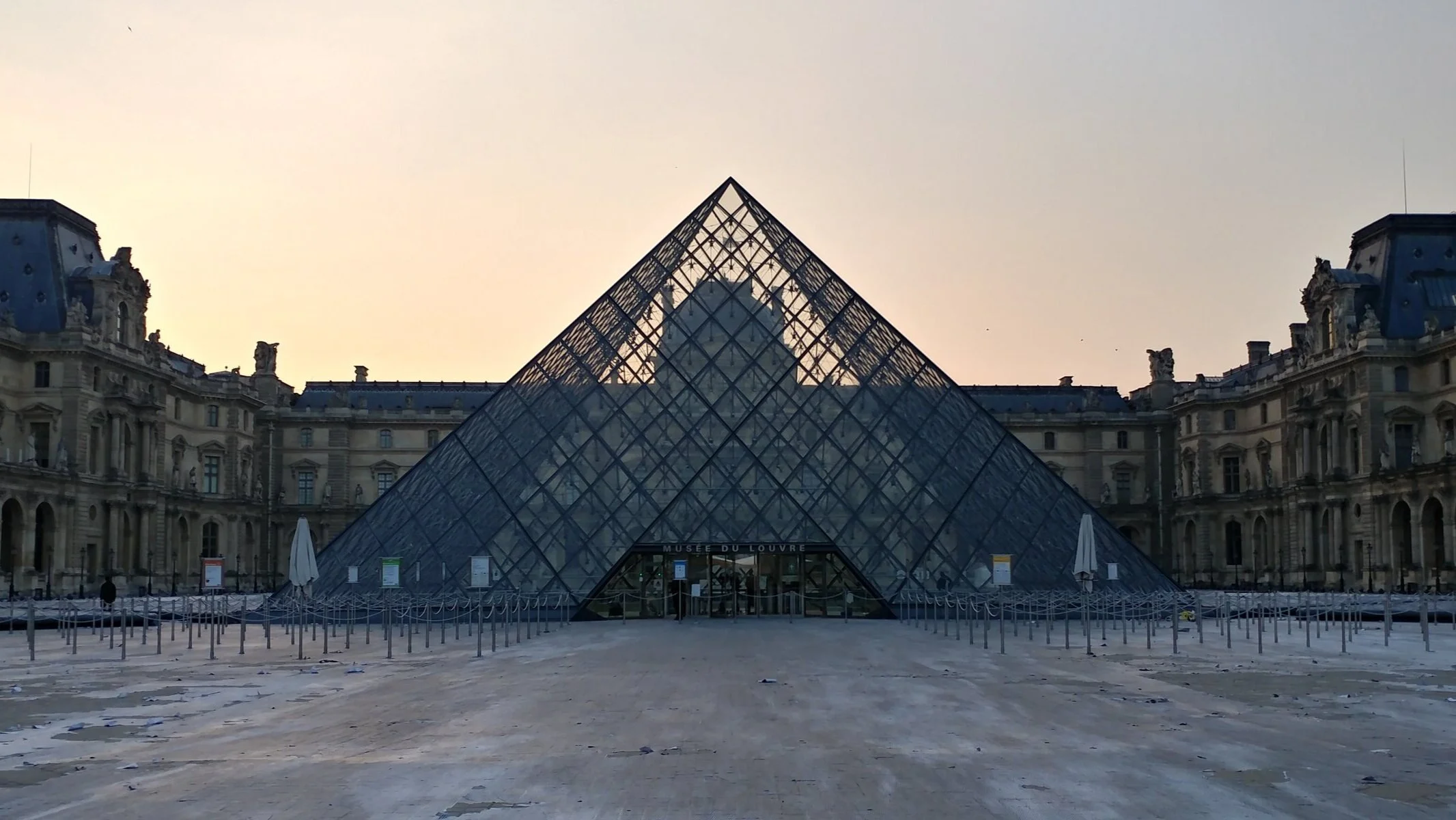History’s Coolest Copy Cats
Being stuck inside for the last however many days (I think we’ve all lost count at this point) due to COVID-19 self-isolation, I’ve become highly entertained with the various copycat challenges that are running about the Internet. Most notable, the Getty Museum in Los Angeles challenged us all to recreate works of art with things we could find lying about our homes, which we are all of course stuck in.
Let me tell you, friends. The Internet did not disappoint here. Great works of renowned masters such as Van Gogh and Vermeer were recreated in painstaking detail with living human beings, beads, pasta, and even vacuum cleaners. People were taking their cabin fever out in the most creative ways, and it was a sheer delight to behold. Want to see what I’m talking about? Click HERE.
My first attempt at focaccia art…
In a Facebook cooking group I joined, home chefs from all over the world share their culinary masterpieces with one another, mostly to make each other’s mouths water. But there is one series of images that keeps popping up over and over again, from kitchens in France, Romania, and, eventually, my own. The * decorated focaccia. * While my final attempt below is pretty simple, just hop onto Google and enjoy what people can do with bread and vegetables, even (again) recreating works of art such as Van Gogh’s Sunflowers or Munch’s The Scream.
Playwright George Bernard Shaw once said, “Imitation is not just the sincerest form of flattery – it’s the sincerest form of learning.” And while we might not be able to claim mastery of the paint brush by creating sunflowers out of bell peppers, it is indeed true that one great way to learn is by following the example of those who know more.
When I visited the Louvre for the first time, I was with twenty five middle school students on a rigid group tour that allowed us a whopping two hours at the museum. Needless to say, we rushed things. Visiting a year later with my husband on our anniversary trip, I was adamant that we devote an entire day to the museum, so I could savor every morsel. We ambled, took our time, sat and stared, and wandered into the deep corners of the exhibits. And that was where I saw for the first time an art copyist.
He stood there in the tiny, quiet room of the expansive museum, in front of a proper easel and very large canvas, with a full set of paints in hand. He wore a suit, though it was not crisp nor was he polished. But his talents clearly did not lie in his fashion sense. For in front of him was one of many still life paintings of fruit and flowers that he was, almost identically, recreating with his own hand and brush. A few rooms later, we came across another copyist, this one wearing an artist’s smock and recreating an image of Jesus Christ from the 17th century (or thereabouts).
I could watch him for hours…
It turns out that art copyists have been visiting the halls of the Louvre since just after the French Revolution. The Museum issues 250 permits per year, with a years’ long waiting list, for the opportunity to recreate one of the great works found inside. They have a time limit for recreating the work, are subject to certain hours of the day, and months of the year, and the final piece must meet certain strict requirements such as being specifically smaller or larger than the original and missing the original artist’s signature. In exchange for compliance with these rules, the Louvre provides an easel to use and extreme trust.
Amateurs and pros alike can apply for a permit, and some famous past copyists include the likes of Paul Cézanne, Pablo Picasso, Marc Chagall, and Salvador Dalí. These artists are not copying for glory. The goal is not to walk away with a piece of art and claim it to be one’s own, though the talent required to reproduce a great work of art is certainly more than most with more ingenuity may possess. No, rather, these artists are copying to learn, to try to recreate the details and nuances that were captured by artists before them who they admire, to develop skills they may not have had before, and to then take those skills to their own art. It is summed up nicely by Igor Babailov, who said, “Perhaps one of the most essential exercises in learning to paint is the copying of master works in the museums.”
Other museums around the world have art copyist programs, though the one at the Louvre is likely the oldest. The Museo Nacional del Prado in Madrid, the National Gallery of Art in Washington, D.C., and the Metropolitan Museum of Art in New York City are other places where you can hone your skills amongst the greatest works of art in the world, each with their own permit and production requirements.
If you are ever so lucky as to come across an art copyist, take a minute to enjoy this unique experience. This person waited years for the chance to be in the presence of one of their heroes, and to try to learn what they could from a person long gone who never could otherwise be their teacher. It’s the ultimate distance learning, if you will. Watch them study the work with their scrutinizing and detailed eyes, and you may view art in a totally new way, which will only make those recreations you do with vacuum cleaners or focaccia all the more amazing.



